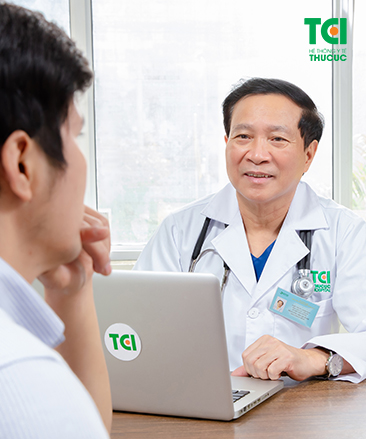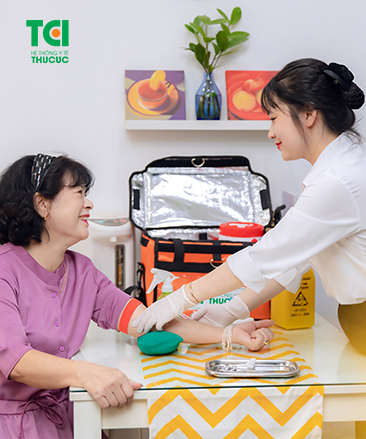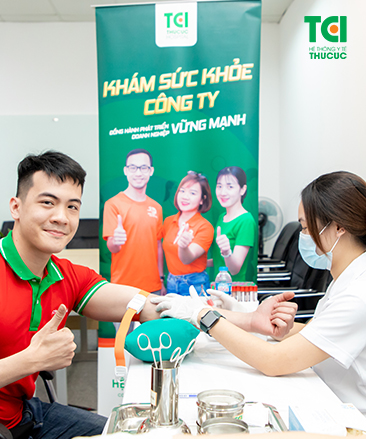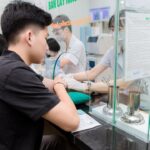When it comes to medical sedation, many people remain hesitant—concerned about safety and potential health effects. However, sedated gastroscopy has become a reliable and patient-friendly method for digestive tract examination, especially at TCI – Thu Cuc Healthcare System, where it is performed under stringent safety protocols. This technique offers a comfortable, painless experience and utilizes approved, safe anesthetic medications.
1. Standardized Procedure for Sedated Gastroscopy at TCI
At Thu Cuc TCI, sedated gastroscopy follows a standardized, step-by-step protocol to ensure diagnostic accuracy, patient safety, and a smooth clinical experience:
– Step 1: Initial consultation with a gastroenterologist.
– Step 2: Pre-procedure testing including blood count, coagulation tests, hepatitis and HIV screening, and any necessary imaging (abdominal ultrasound, CT scan, etc.).
– Step 3: Preparation for endoscopy, including vital signs measurement and recording patient data.
– Step 4: Administration of a defoaming agent to reduce gastric bubbles.
– Step 5: Establishment of an intravenous (IV) line for anesthesia.
– Step 6: Anesthesiologist evaluates the patient and administers sedation.
– Step 7: The endoscopist performs the gastroscopy.
– Step 8: Upon completion, the IV line is removed.
– Step 9: The patient recovers from sedation under observation for at least 30 minutes.
– Step 10: Results are reviewed and discussed with the physician.
Typically, the procedure lasts about 15–20 minutes if no additional interventions are needed. Combined gastroscopy and colonoscopy (dual endoscopy) may take longer.
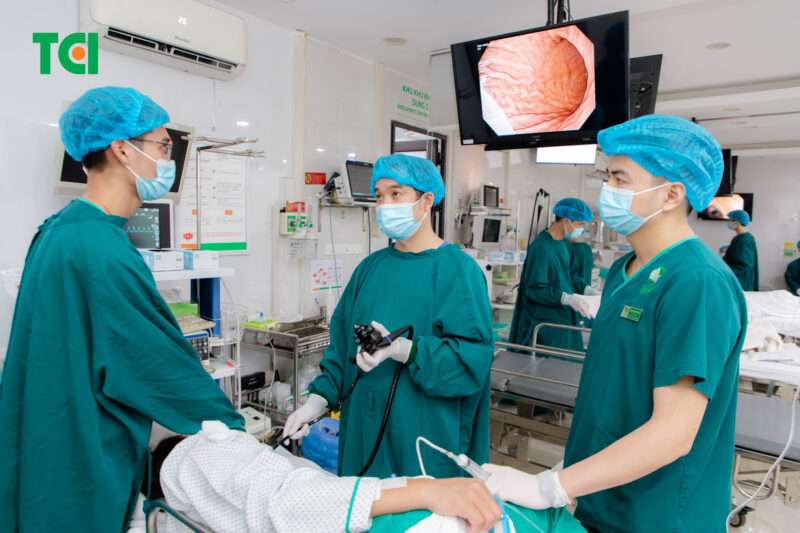
TCI conducts sedated endoscopy following standardized procedures.
2. Advantages of Sedated Gastroscopy at TCI
2.1 Comfortable, Pain-Free Experience
At Thu Cuc TCI, patients undergo a pain-free gastroscopy using target controlled infusion. This modern technique allows for precise, individualized sedation by calculating the ideal drug dosage based on age, gender, weight, and height. The automated infusion system maintains consistent anesthetic levels throughout the procedure. As a result, patients sleep soundly and remain unaware of discomfort, nausea, or gagging during the examination.
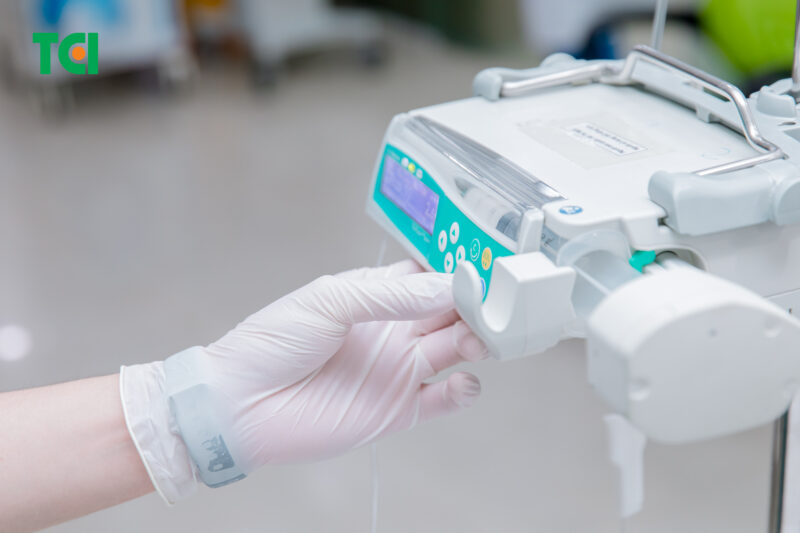
Target controlled infusion is used during sedated endoscopy at TCI.
2.2 Safe and Approved Anesthetic Drugs
The anesthetics used at TCI are safe and approved by Vietnam’s Ministry of Health and the Hanoi Department of Health. The primary sedative, propofol, is globally recognized and widely used in medical settings. At TCI, the propofol formula includes a natural soybean base, ensuring it is gentle and well-tolerated. The drug acts quickly and wears off rapidly, allowing patients to regain full alertness shortly after the procedure with no lingering fatigue or health impact.
2.3 Enhanced Accuracy for Endoscopic Procedures
Sedation ensures that the patient remains still and relaxed throughout the procedure, enabling the physician to perform the endoscopy more accurately and efficiently. This is particularly important in cases involving interventional techniques, such as foreign body removal, bleeding control, polyp excision, or early-stage cancer treatment.
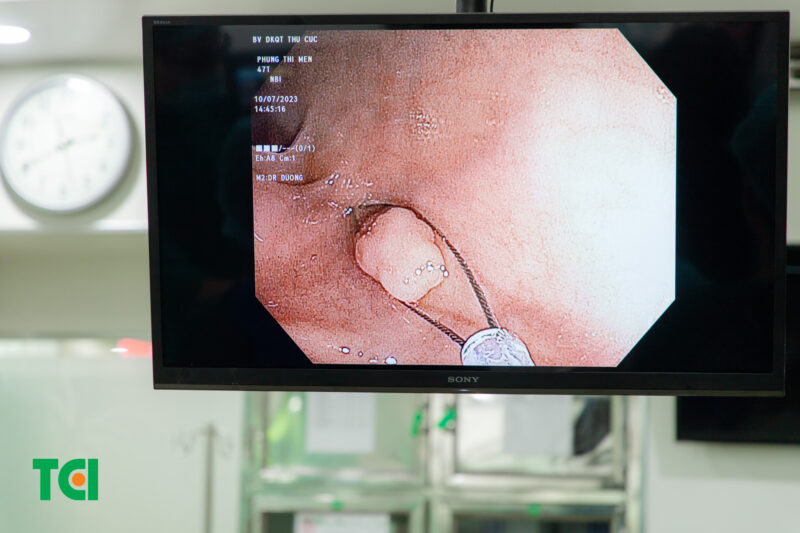
Sedated endoscopy enables physicians to perform complex interventions.
3. Contraindications for Sedated Gastroscopy
While generally safe, sedated gastroscopy is not recommended in the following cases:
– Patients who decline sedation.
– Suspected or confirmed gastrointestinal perforation.
– Known allergies to components of anesthetic medications.
Additional caution is advised in the following situations:
– Patients who recently underwent gastrointestinal surgery (within 7 days).
– Individuals over 80 years of age.
– Those with poor general health or severe malnutrition.
– Patients with obesity.
– Young children.
– Patients in shock, with circulatory or respiratory failure, or severe anemia.
– Individuals with chronic health conditions such as hypertension, diabetes, heart disease, or known allergies.
– Pregnant women.
In such cases, a pre-procedure evaluation with a specialist and laboratory testing is necessary to determine eligibility for sedation.
4. Preparation Guidelines Before Sedated Gastroscopy
To ensure safety and optimal results, patients are required to:
– Fast for 6–8 hours before the procedure (preferably schedule morning appointments).
– Avoid drinking any fluids for at least 2 hours prior to the exam, especially colored beverages like milk, fruit juices, smoothies, soda, or alcohol.
– Inform the physician of any underlying health conditions or current medications (e.g., for bleeding disorders, allergies, hypertension, heart disease, or diabetes).
– Book the procedure in advance to receive complete guidance.
Sedated gastroscopy at Thu Cuc TCI offers a painless, high-quality diagnostic experience, supported by modern technology and a commitment to patient safety. If you are in need of gastrointestinal screening or treatment, contact a trusted healthcare facility like TCI to receive professional and reliable care.

